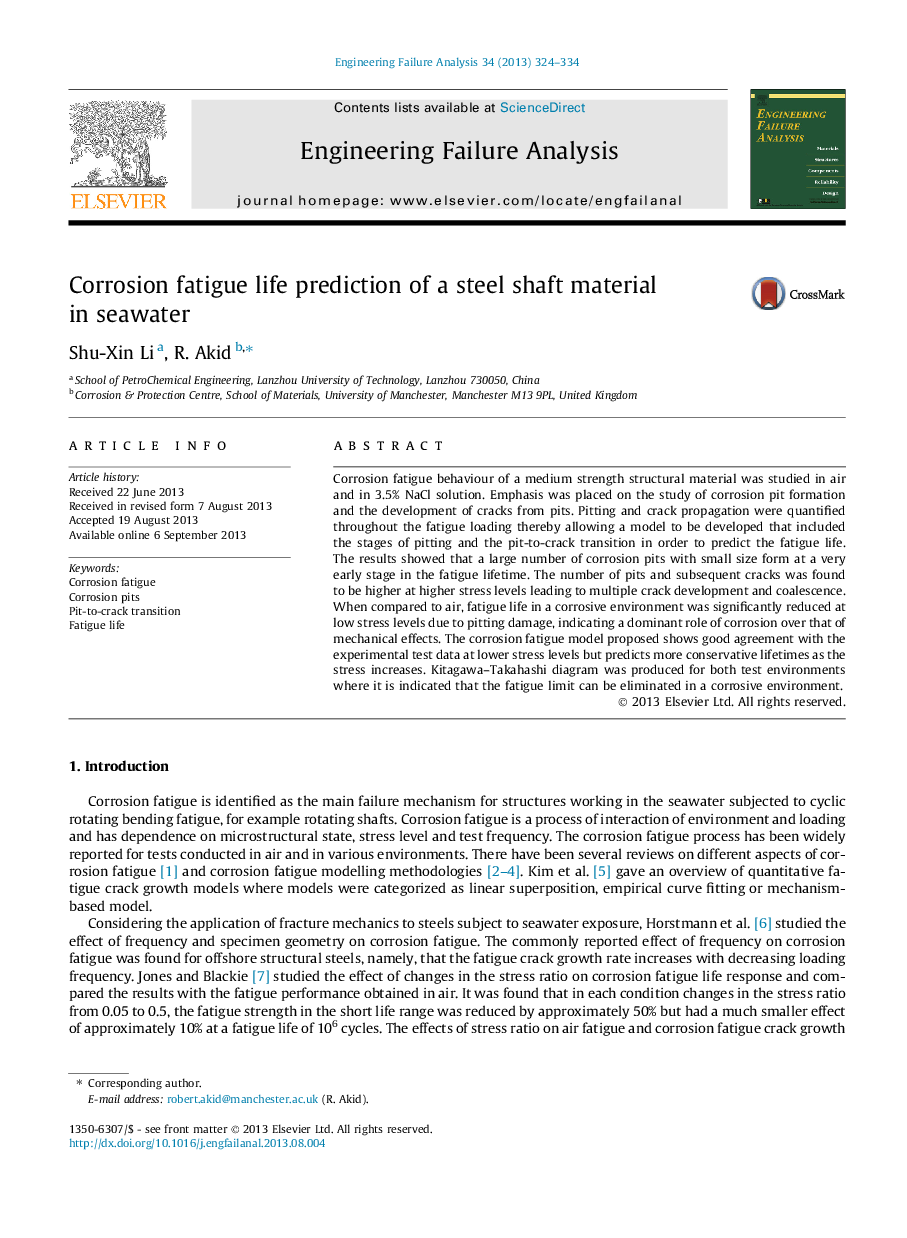| Article ID | Journal | Published Year | Pages | File Type |
|---|---|---|---|---|
| 768518 | Engineering Failure Analysis | 2013 | 11 Pages |
•Pre-pits reduce the corrosion fatigue life by 60% compared to air lifetime.•The electrochemical effect is greater than mechanical effect on fatigue life.•The fatigue limit of a material can be eliminated in a corrosive environment.
Corrosion fatigue behaviour of a medium strength structural material was studied in air and in 3.5% NaCl solution. Emphasis was placed on the study of corrosion pit formation and the development of cracks from pits. Pitting and crack propagation were quantified throughout the fatigue loading thereby allowing a model to be developed that included the stages of pitting and the pit-to-crack transition in order to predict the fatigue life. The results showed that a large number of corrosion pits with small size form at a very early stage in the fatigue lifetime. The number of pits and subsequent cracks was found to be higher at higher stress levels leading to multiple crack development and coalescence. When compared to air, fatigue life in a corrosive environment was significantly reduced at low stress levels due to pitting damage, indicating a dominant role of corrosion over that of mechanical effects. The corrosion fatigue model proposed shows good agreement with the experimental test data at lower stress levels but predicts more conservative lifetimes as the stress increases. Kitagawa–Takahashi diagram was produced for both test environments where it is indicated that the fatigue limit can be eliminated in a corrosive environment.
